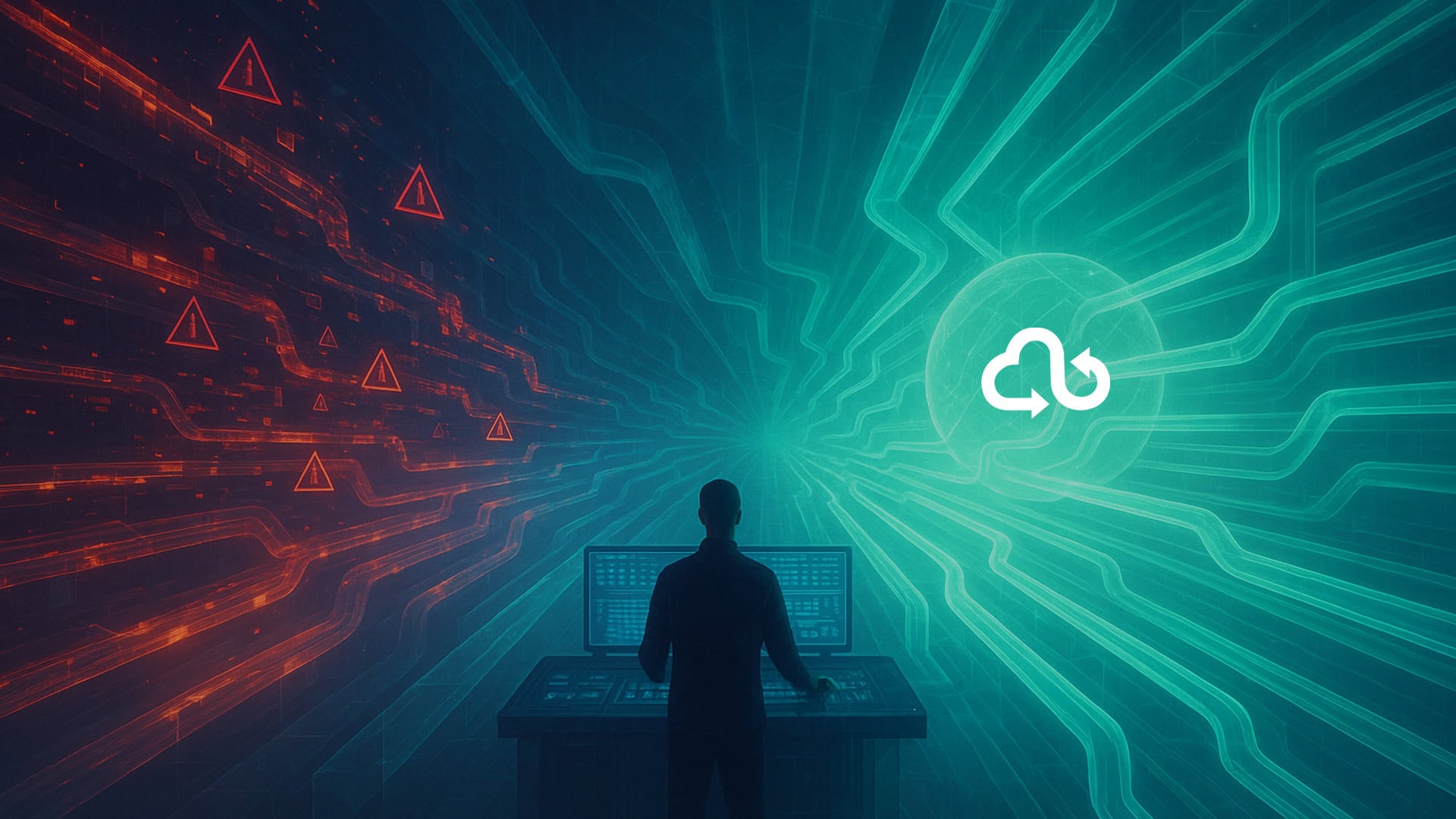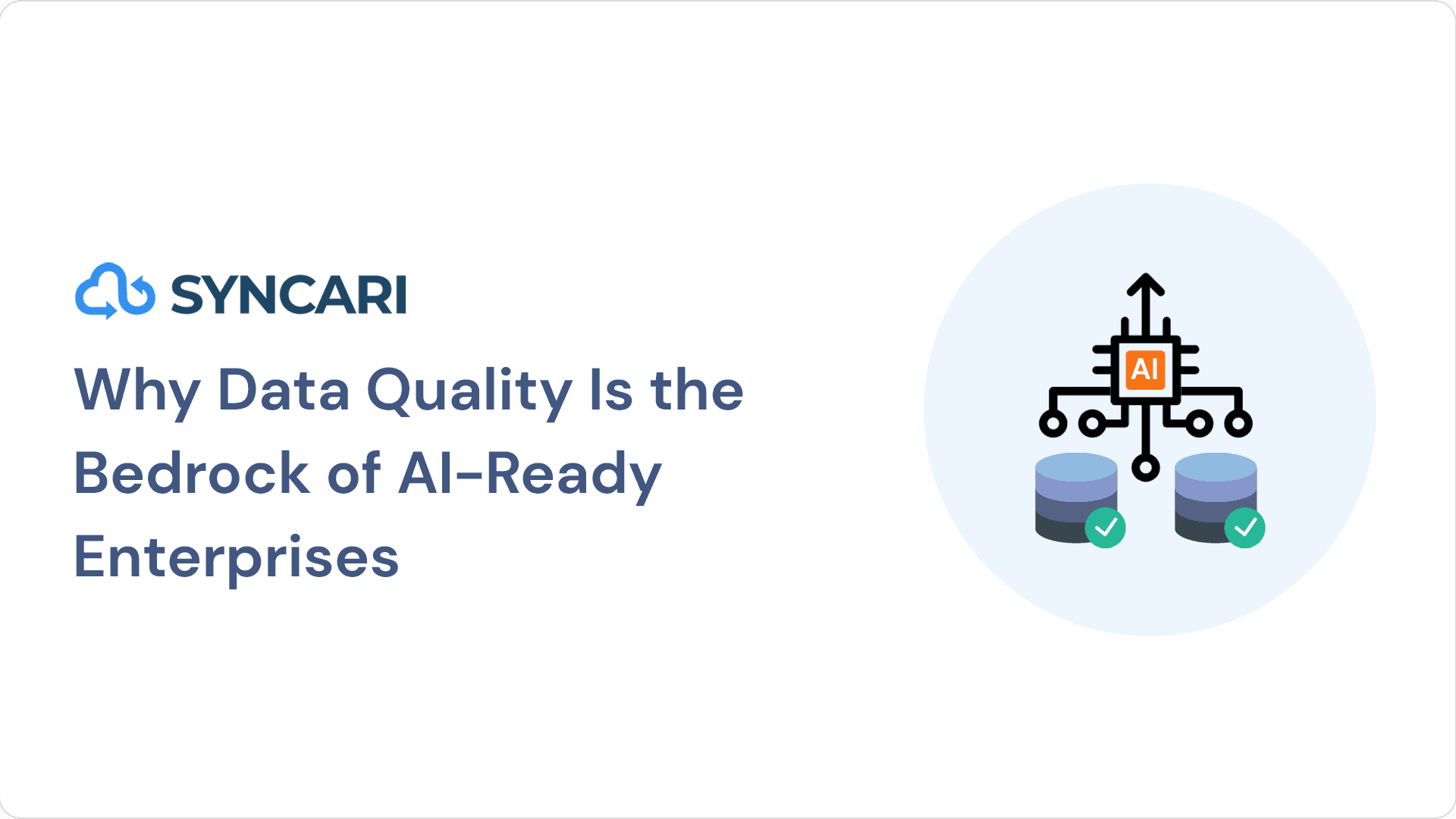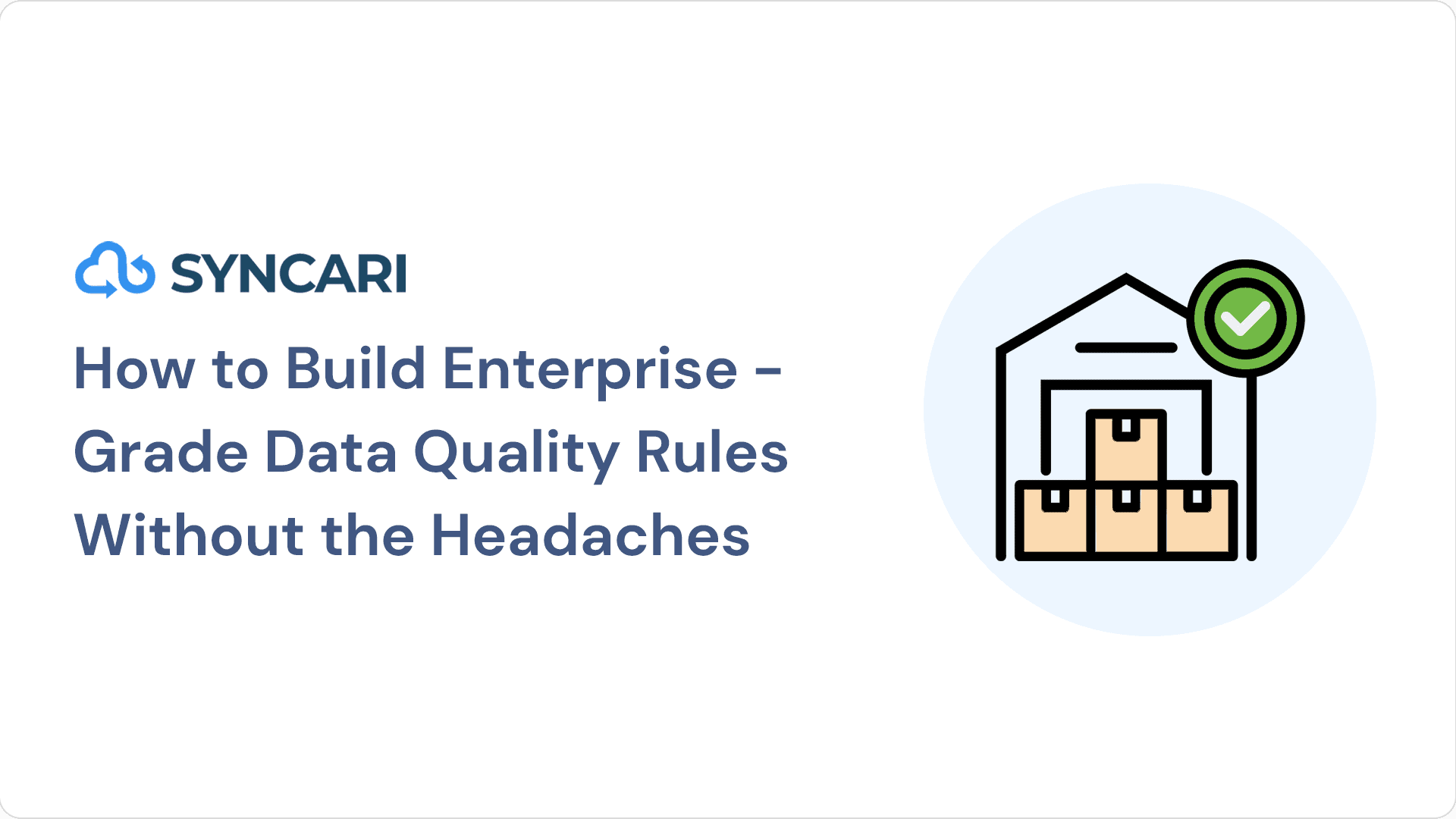“Dirty data” can harm your company’s performance in the long run by giving you misleading statistics to project your future tasks and pipelines on. These factors lead to the wastage of resources and potential loss in revenue. Many companies have entire teams dedicated to data integrity and data quality, but these jobs are frustrating, boring, and inevitably have high turnover. Data cleansing tools help you avoid this risk. Data scrubbing or data cleansing processes ensure you receive high-quality data free of errors and inconsistencies so you can make more informed business decisions.
Learn more about data cleansing processes, their importance to your company’s future, and the best data cleansing tools in the industry with this article.
What is Data Cleansing?
Data cleansing refers to the first step of data preparation, which deals with identifying wrong, inconsistent, and missing data across all storage points and warehouses and taking steps to resolve them.
Data cleaning promotes a higher quality of data and efficient decision-making. Low-quality data gives you wrong insights and statistics to work with. Inaccurate data has cost the US $3 trillion annually and can have severe consequences for your business.
The steps taken to carry out data cleaning can range from deleting wrong or inaccurate information, correcting typographical errors, and removing corrupt files, to filling in missing values and creating a standardized format for your data to be viewed on.
[ Related: How to Manage a CRM Data Cleansing Project ]
Why does your Company need Data Cleansing Tools?
As we have established, data is essential in informing and deciding your next business strategy. Data cleaning fixes errors and inconsistencies which might be present in your data source.
Without clear and accurate data, your team can face reduced workflow efficiency and waste vast resources.
Here are the major benefits of using data cleansing tools and why you should consider using them in managing your data warehouses:
The first and most obvious advantage of data cleansing tools is that they provide several insights derived from your raw data. These tools help data analysts better understand the data source by fixing errors and inconsistencies.
When you make business decisions supported by clean data, you save more resources and time by streamlining company aspects that can get you better results.
Data cleaning tools can assist in on-site needs from data. Company aspects like individual employee performance and job satisfaction are important factors to optimize for more efficient team management and project pipelines.
A data cleansing tool can quickly fill you in with information regarding reps needing further coaching or at risk of burnout.
Structured data helps you create a significantly improved customer experience by understanding their dynamic needs and pain points and offering customized solutions.
Accurate data analysis can enable you to stay ahead of your competition on emerging trends and generate more actionable leads.
[ Related: What is a Data Clean Room and Why do you Need One for Secure Data Sharing ]
Best Practices for Data Cleansing
Data cleansing tools are an important part of ETL, but you need more for a complete data cleaning process. Let’s take a brief look at the various tasks you’d have to undertake for clean data:
- Identifying the major data groups which add value to your company’s insights and analytics. Irrelevant information can lead to inaccurate observations.
- Every instance of this data must be taken from disparate sources and placed into a structured format.
- Data cleaning can now take place with the assistance of data cleaning tools. The best way to begin is by searching for duplicate values and removing them.
- For missing and conflicting data values, you can use a data management tool like Syncari to detect and resolve them automatically.
- Finally, this data cleaning process must be standardized to meet your company’s data needs and management strategies. Factors like the data type and how frequently you need it should be considered.
[ Related: Top CRM Data Quality Tips from Operations Experts ]
Top 5 Data Cleansing Tools
To help you maintain a standardized data cleansing project for your company, I have listed the 5 best data cleansing tools in the industry:
1. Syncari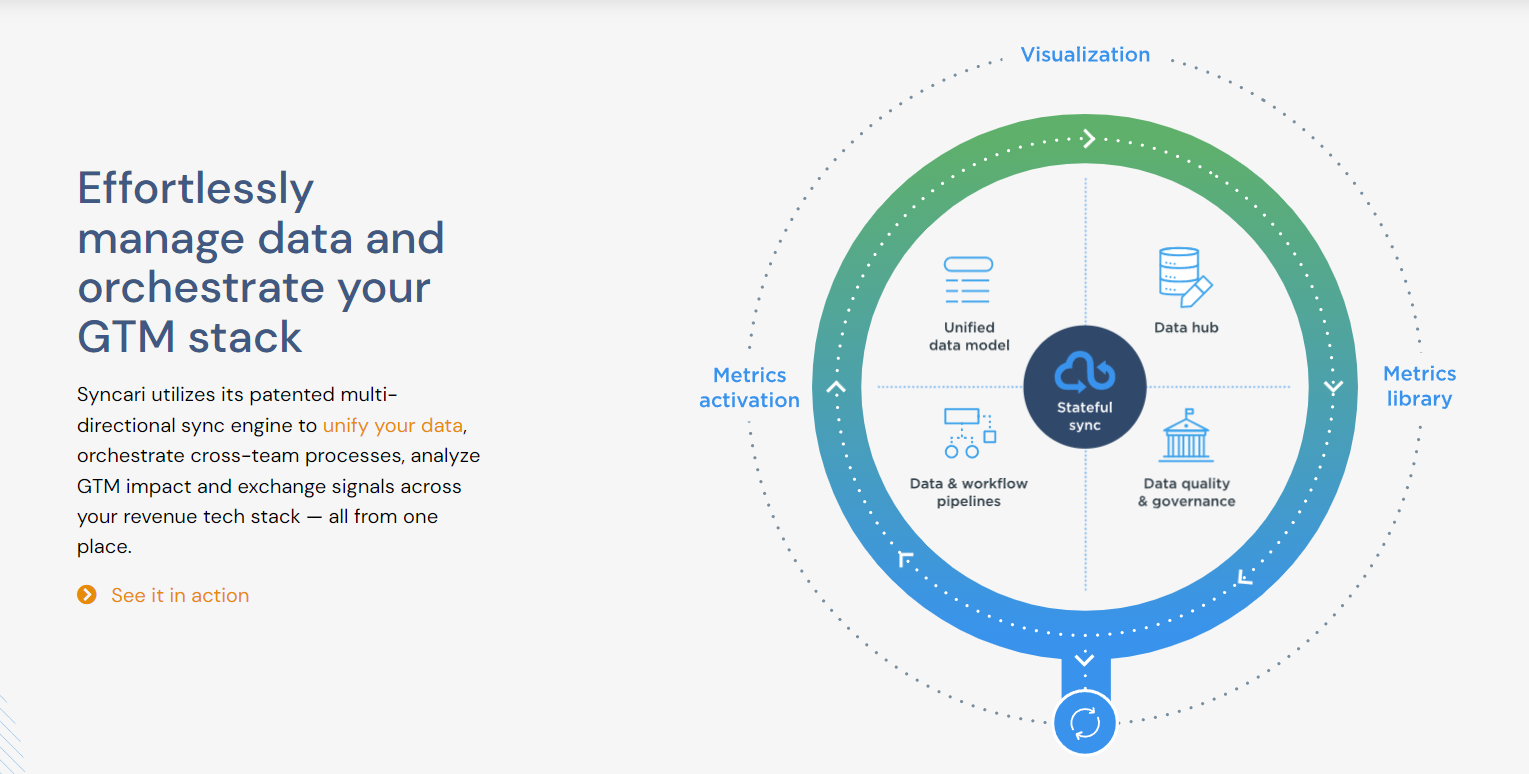
Syncari is a cloud-based data management software that provides data integration and synchronization to provide companies with cleaner actionable data. We are committed to upholding data quality and governance.
Powerful AI algorithms automate and reduce errors in manual tasks such as data entry, cleaning, and mapping for cleaner data storage. These algorithms also integrate and unify data from disparate sources to make it more accessible to your teams.
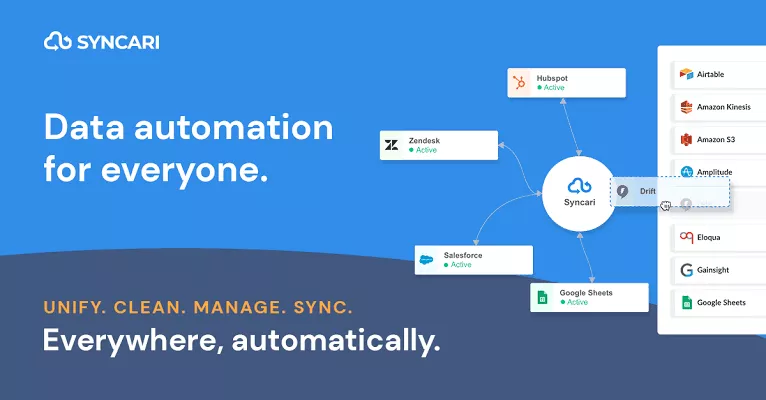
Syncari’s patented stateful sync ensures that your data reflects the same way across all systems. You can make more informed business decisions and improve customer relations.
Stateful sync unifies data across all systems and assists in maintaining data cleansing by detecting data changes automatically. Syncari updates your systems in real-time, no matter how many simultaneous changes you make to your data source.
What gives Syncari the edge over other data cleansing tools is its automation of manual data management tasks and its no-code nature. Your GTM teams can see improved efficiency with better access to data, even without coding expertise.

Syncari’s advanced artificial intelligence and machine learning algorithms keep your data error-free and consistent. It achieves this by detecting and diagnosing conflicts within data sources based on pre-set guidelines.
Intelligent data matching merges records across all systems to eliminate the possibility of duplicate data, giving you better insights to further streamline your workflows.
You can try out Syncari’s features risk-free with their free trial. You can also book a demo to create more efficient pipelines that guarantee customer satisfaction.
2. OpenRefine 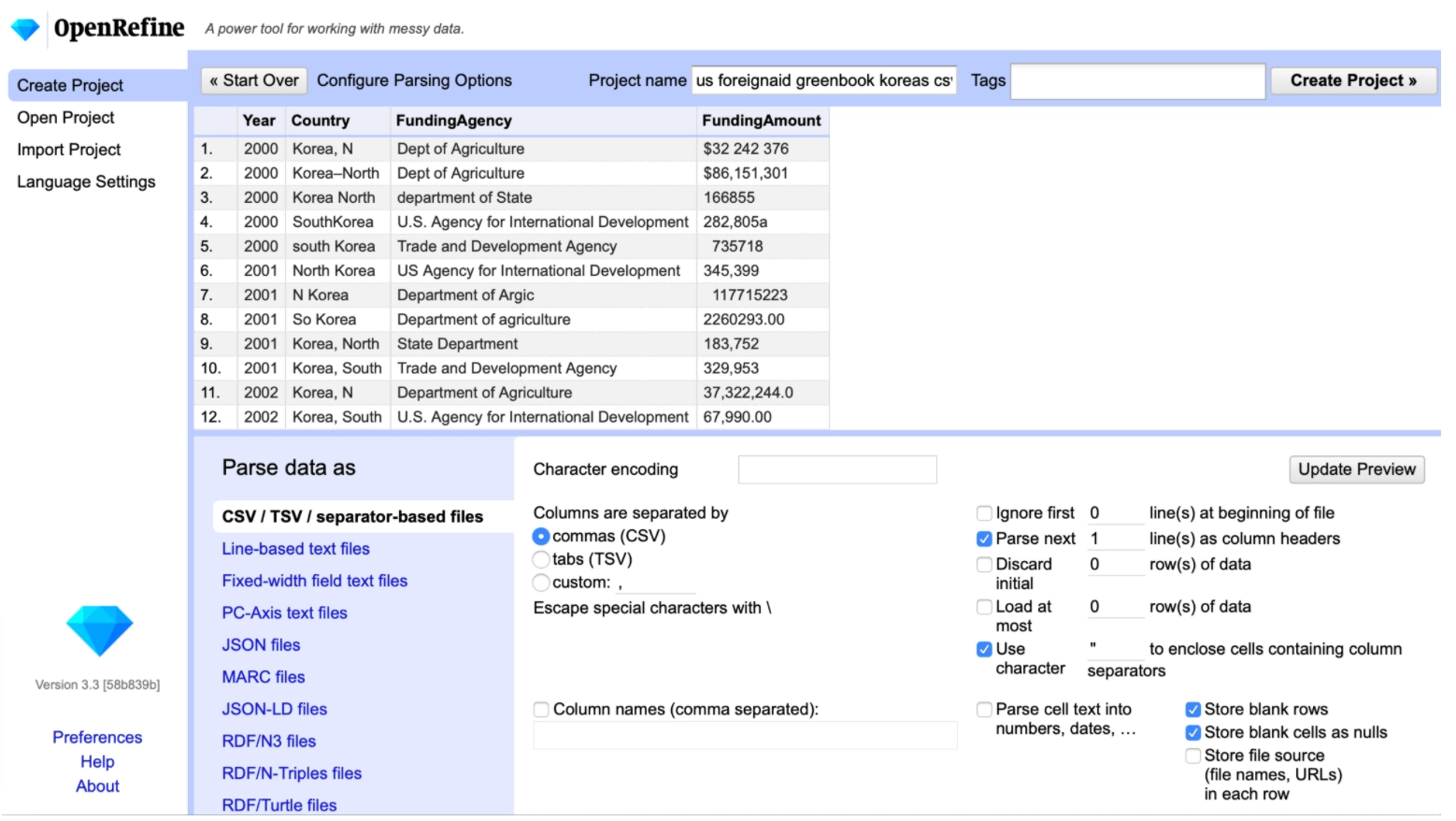
OpenRefine (previously known as Google Refine) is an open-source data cleansing tool that offers free and customizable utility options for all coding experience data analysts. It offers a user-friendly GUI that can clean data with no coding.
Customizability options like running Python scripts mean you can operate and streamline data filtering tasks depending on your company’s needs.
OpenRefine allows users to transform data into different formats to manage and clean big data sets. It lets you parse data from the internet and contribute to Wikibase.
For added security, all data cleaning takes place on your device with options for external web services for expansion and reconciliation. However, this means the performance of various processes is tied to your device’s RAM output.
3. Winpure Clean and Match 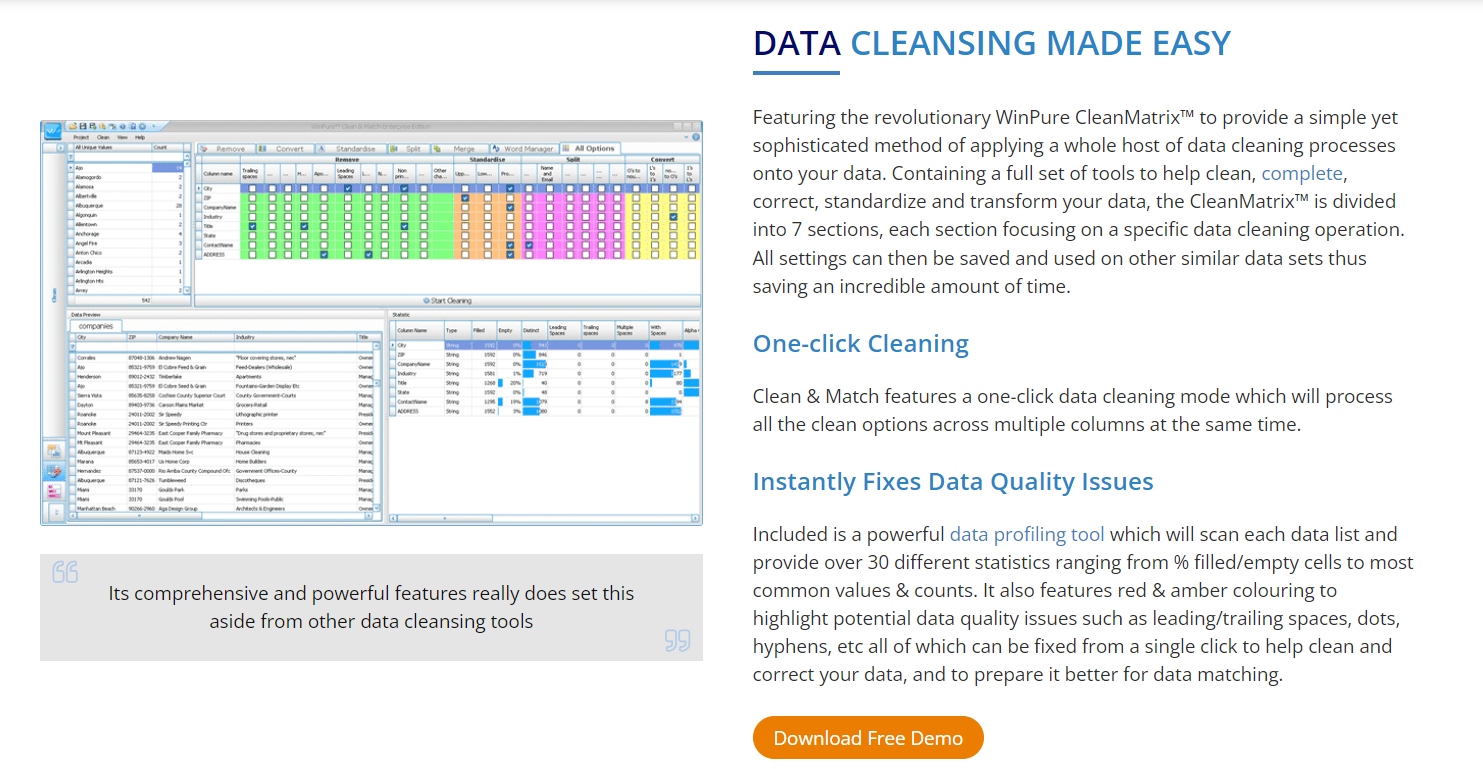
Another cost-friendly data cleansing tool, Winpure Clean and Match, offers solutions for various sources like spreadsheets, CRMs, and databases such as Access, SQL, Dbase, CSV files, etc.
Its easy-to-use interface helps you deduplicate, clean, standardize, and match records across large datasets. Business users can use Winpure with no technical experience or teams with limited IT professionals.
Winpure uses fuzzy matching to detect inconsistencies within your structured data present in the form of typographical errors. It is installed locally, so you don’t have to worry about risking your privacy by uploading your data to a cloud platform.
However, like OpenRefine, your data cleaning performance depends on your computer’s RAM output.
4. Trifacta Wrangler
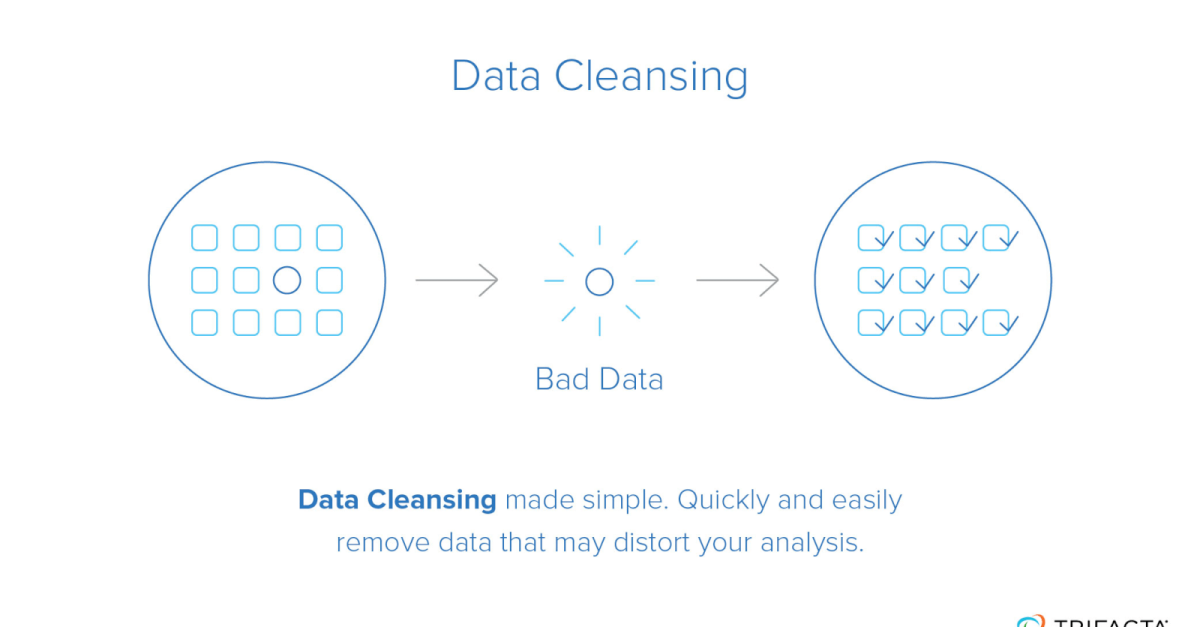
Trifacta is a commercial venture by Stanford’s Data Wrangler project that provides users with powerful data cleaning and transformation options. The data cleansing tool is designed to focus primarily on analysis for a faster formatting time.
Like Syncari, Trifacta relies on powerful artificial intelligence and machine learning algorithms to suggest data transformations by spotting inconsistencies in the data source.
Data analysts can standardize and get visualized displays of their data through these features. Trifacta’s GUI guides users through the data-cleaning process and can point out inconsistencies and formatting errors.
Trifacta Wrangler Pro supports larger datasets and cloud storage, while the Enterprise package offers centralized security to safely keep sensitive data.
5. TIBCO Clarity
TIBCO Clarity is a cloud-based SaaS data cleaning tool for analysis and standardization. It provides on-demand software solutions for data integration across disparate sources for accurate analysis. You can merge data from XLS and JSON files to output as a single format.
In addition to validating, deduplicating, and cleaning data, TIBCO helps you stay on top of emerging patterns and trends to make informed business decisions. The data cleaning tool lets you automate data collection, formatting, and cleaning for efficient pipelines.
The drawback to TIBCO Wrangler is the initial time it takes to set up these functions. Newer users can find it hard to navigate the various operations for optimal results.
[ Related: Data Quality Automation: Introduction and Best Practices ]
Conclusion
Clean data is essential for a holistic view of your company’s performance. Without it, you and your team will not focus on the lacking aspects, leading to inefficient workflows. You could potentially lose a huge amount of resources without proper decision-making.
Data cleaning tools like Syncari assist you with downstream processes and business decisions with error-free, accurate, and consistent data across all systems.
Your team can access the data it needs when they need it so that your business can thrive with the power of automation, data syncing, and robust algorithms.
Sign up for Syncari’s free trial or book a demo to experience the best data-cleaning tool and unlock your company’s potential.


